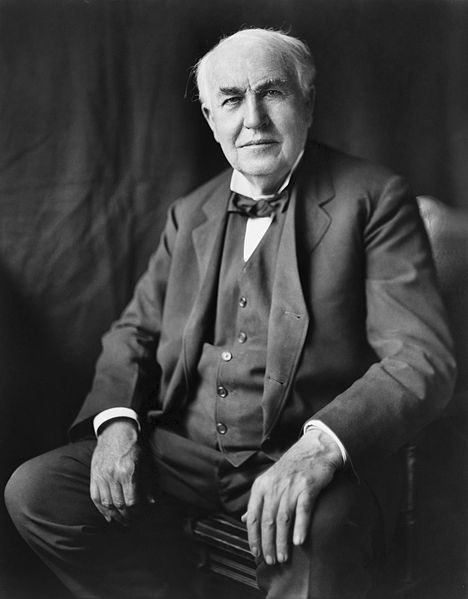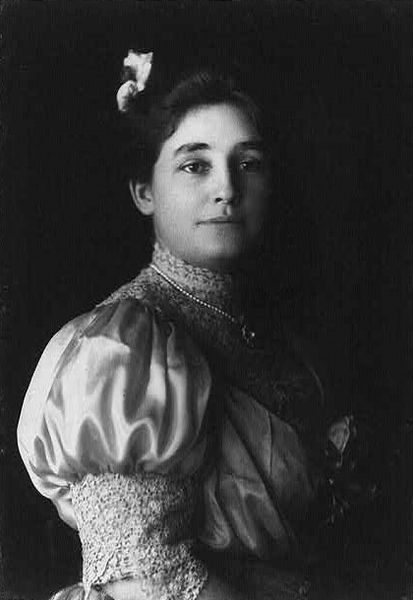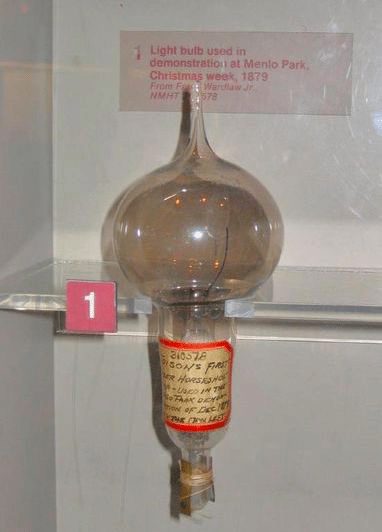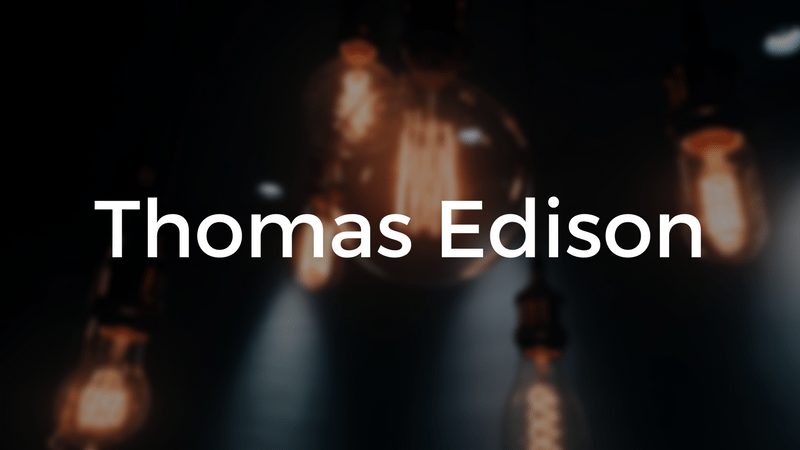Thomas Edison
Episode #4 of the course Inventors who changed the world
Thomas Alva Edison (1847-1931) is considered America’s most famous inventor. Not only did he invent the practical light bulb, audio recording, electrical power distribution, motion picture camera, mechanical vote recorders, the telephone-microphone, and an electric car battery, but he also pioneered the first industrial research and development laboratory. He had 1,093 US patents and founded 14 companies, including General Electric.
 Thomas Alva Edison, c. 1922
Thomas Alva Edison, c. 1922
Edison was born in Milan, Ohio and grew up in Port Huron, Michigan, where he first worked as a railway telegraph operator at the age of 16 and sold newspapers on trains along the Grand Trunk Railway, including one he printed himself. In later years, Edison claimed that his deafness developed from being struck on the ears by a train conductor when his homemade laboratory in a box car caught on fire. However, others attribute Edison’s deafness to scarlet fever he had as a child. Both his experience as a telegrapher and his hearing impairment motivated his first inventions—an improved telegraph and printer for converting electrical signals into letters.
In 1866, Edison moved to Louisville, Kentucky to work for Western Union on the Associated Press news wire. He chose to work the night shift to read and experiment. He was fired after a year when he spilled sulfuric acid from a battery and it ate through the floor onto his boss’ desk below. However, after this setback, Edison soon patented the quadruplex telegraph—one capable of handling four messages simultaneously—whose sales then funded the construction of the laboratory where he created his famous inventions.
Edison and his first wife, Mary Stillwell, were both less than fantastic with finances, so Edison hired his father to build a laboratory in rural Menlo Park, New Jersey here he could focus on work. There, in 1877, he developed the phonograph, the first audio recording of any kind, and became known as “the Wizard of Menlo Park.” His first phonograph recorded audio by indenting tinfoil wrapped around a grooved cylinder; it was not practical for commercial development. Edison did not work on it further until several years later when competition appeared with inventors such as Alexander Graham Bell using wax-coated cardboard cylinders.
 Photograph of Edison with his phonograph (2nd model), taken in Mathew Brady’s Washington, DC studio in April 1878.
Photograph of Edison with his phonograph (2nd model), taken in Mathew Brady’s Washington, DC studio in April 1878.
 Mina Miller Edison in 1906
Mina Miller Edison in 1906
Edison did not exactly invent light bulb; he invented the first truly useful one and a power system to light it. Previous bulbs were expensive, drew too much power, and didn’t last long. Edison realized the need for a bulb using low current and a high-resistance filament. After famously experimenting with all sorts of metals, he got one to work for 13 hours using carbon filament and immediately filed his patent; a few weeks thereafter, he and his team discovered one that could last 1200 hours—carbonized bamboo filament. It was the light bulb that motivated Edison to construct the first electrical power station in Manhattan in order to light city businesses with his bulbs. A competition ensued between Edison’s DC (direct current) and the AC (alternating current) promoted by Nikola Tesla; see our upcoming lesson on Tesla for that story.
 Thomas Edison’s first successful light bulb model, used in public demonstration at Menlo Park, December 1879.
Thomas Edison’s first successful light bulb model, used in public demonstration at Menlo Park, December 1879.
A motion picture camera called the kinetograph was also a product of Menlo Park. Edison did not invent the projector. His original goal had been to sync video with sound recordings but found that too difficult so ended up inventing silent movies instead. Edison’s film studio eventually made over 1,000 films, including Alice in Wonderland, Frankenstein, and The Great Train Robbery. Edison was not fond of “talkies” (motion pictures with sound) when they later came out. He said that there was no more good acting on screen after they began concentrating on the voice; of course, by then, Edison was deaf.
Edison was one of several inventors who designed the many devices involved in electronic audio communications, contributing to radio, telephones, and audio recording. Future lessons will cover his rivals, Nikola Tesla, Alexander Graham Bell, and Guglielmo Marconi, the subject of our next lesson.
Quotes
“I have not failed. I’ve just found 10,000 ways that won’t work.” – Thomas Edison
“Many of life’s failures are people who did not realize how close they were to success when they gave up.” – Thomas Edison
“We often miss opportunity because it’s dressed in overalls and looks like work.” – Thomas Edison
“Genius is one percent inspiration, ninety-nine percent perspiration.” – Thomas Edison
Recommended book
Thomas Edison: Inventing the Modern World (The True Story of Thomas Edison) by Alexander Kennedy
Share with friends

